September 26, 2018
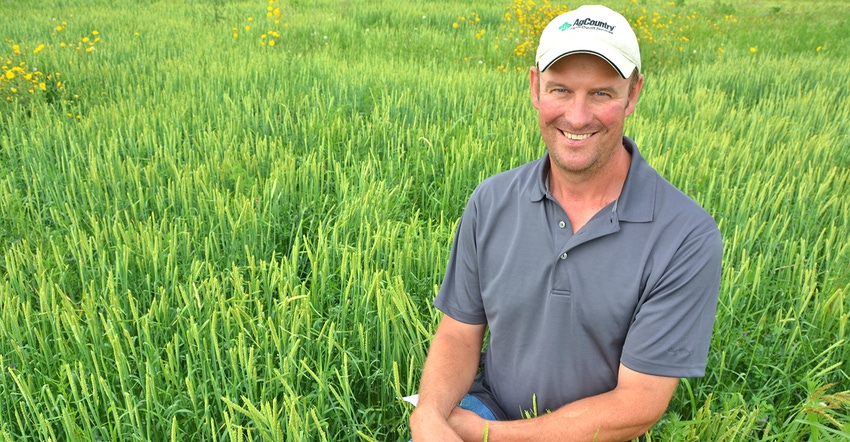
When Christof Just was trying to figure out a better way to manage some of his low-yielding cropland acres he turned to new source for help — Pheasants Forever.
Pheasants Forever, an organization that promotes pheasant hunting and pheasant habitat, has hired several precision ag and conservation specialists and trained them on how to run EFC Systems' Profit Zone Manager. The computer program allows users to combiner yield map data with input costs and grain prices to generate profitability maps. Different ways of managing marginal acres — those that show up as red colored pixels in most yield maps — can be quickly compared.
"We are trying to help farmers turn red acres green," says Ryan Heiniger, Pheasants Forever director of agriculture and conservation innovation.
During and after a tour in North Dakota this summer, several farmers talked about their experience with Pheasants Forever’s take on precision agriculture.
Confidence to jump
Just, Berlin, N.D., had seen his corn and soybean yields decline and his "red" acres expand due to frequent flooding, a rising water table and an increase in soil salt levels.
"These red areas can really cost farmers a lot of money," says Melissa Shockman, North Dakota’s Pheasants Forever precision ag and conservation specialist. "You not only mis-allocate seed, herbicide and fertilizer on low yielding areas, but you drag down the yield average and profitability for the whole field."
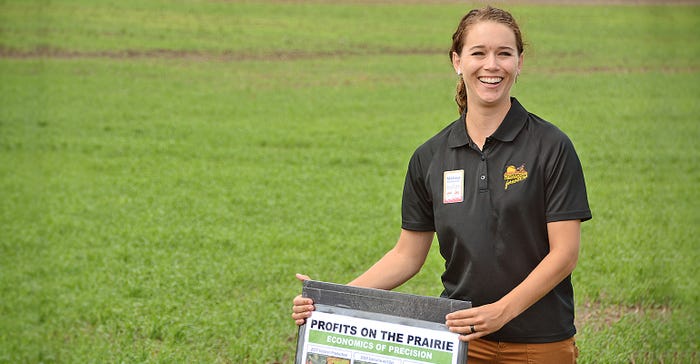 HELPING HAND: Melissa Shockman, Pheasants Forever precision ag and conservation specialist, outlines several planting options she compared some low-yielding acres.
HELPING HAND: Melissa Shockman, Pheasants Forever precision ag and conservation specialist, outlines several planting options she compared some low-yielding acres.

She helped Just run the numbers on different planting and program options. It showed that converting 87 low producing acres in a 429-acre soybean field to forage production for his stock cows would improve the profit on the field by about $22 per acre. Pheasants Forever provided a 75% cost share on forage barley, alfalfa and salt-tolerant grass seed mixture.
"I knew which acres were bad," Just says. "Being able to project what would happen financially if I planted something else gave me the confidence to do it."
Win for everyone
Cole Young, LaMoure, N.D., says his family was having trouble with saline areas on owned and rented cropland. Each year the saline acres got bigger. When one of their landlords couldn’t get a saline area in a field they rented enrolled into the Conservation Reserve Program, Melissa helped them find a Pheasants Forever cost-share program for planting grasses and a 10-year agreement funded through the Federal Aid in Wildlife Restoration Act from North Dakota Game and Fish Department that paid $69 per acre for setting aside the land.
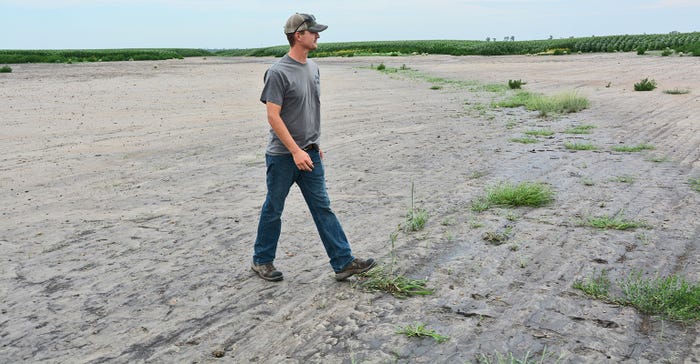 NO CROP: Cole Young walks across a saline area in a field they rent. They helped their landowner get the land enrolled in a conservation program. “It was a win for everybody,” he says.
NO CROP: Cole Young walks across a saline area in a field they rent. They helped their landowner get the land enrolled in a conservation program. “It was a win for everybody,” he says.

Contract rates vary from county to county and year to year and are roughly 75% of the average CRP rate. After the grasses are established, parts of the easement can be grazed or hayed.
The landowner received the easement payment instead of rent from the Youngs. The Youngs didn’t have to rent land on which corn, soybeans and other crops wouldn’t grow. Pheasants Forever picked up additional habitat.
The LaMoure Soil Conservation District manages the easement. It eliminated wind and water erosion, protected water quality and improved soil health on the acres.
"It was a win for everyone," Young says.
Hunting access
Clayton Shockman — Melissa’s husband — used a similar approach. He and his father, Bruce, and brother, Jordan, planted forage barley in a low area next to a wetland and interseeded rye in corn across the rest of the field.
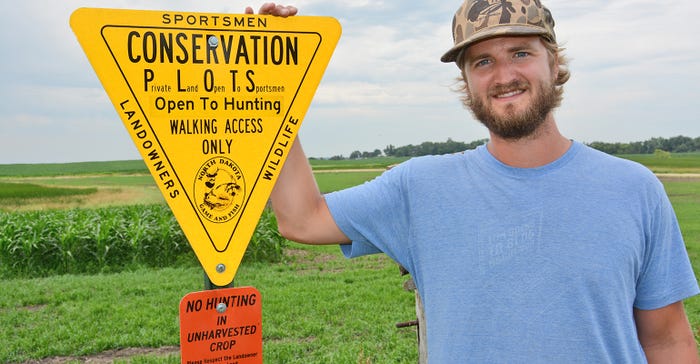 INCOME BOOST: Clayton Shockman turned losses into profits by enrolling a field with marginal land into North Dakota’s Public Lands for Sportsmen Program.
INCOME BOOST: Clayton Shockman turned losses into profits by enrolling a field with marginal land into North Dakota’s Public Lands for Sportsmen Program.

But when Melissa checked the financials with Profit Zone Manager, she found that even though the return on investment was better than trying to plant corn in the low areas too, it would not make the field profitable. However, enrolling the whole quarter section in North Dakota Game and Fish Department’s Private Lands Open to Sportsmen (PLOTS) would push the income high enough so that both the marginal land and the whole field turned a profit.
"We like hunting and we allow the public to hunt on some of our land anyway, so it is a good fit," Clayton says.
Limiting losses
Brothers Aaron and Ryan Stroh, who farm near Grand Rapids, N.D., were tired of losing money on seed, fertilizer and herbicide on land that was flooding more and more frequently. Runoff from five sections of neighboring land drained through the field. Standing water often killed the corn and soybean plants in the low area. When the water drained off and the soil dried up, weeds took over
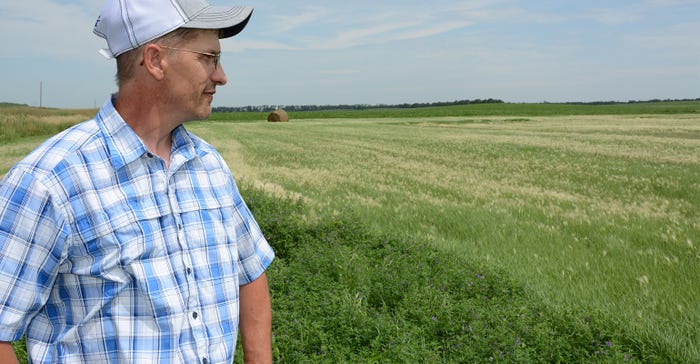 LOSING MONEY: Aaron Stroh looks out over a low area in field that that keeps flooding, usually after he and his brother have invested seed and herbicide in the acres.
LOSING MONEY: Aaron Stroh looks out over a low area in field that that keeps flooding, usually after he and his brother have invested seed and herbicide in the acres.

With Melissa’s help, the Strohs looked at different cropping options and decided to plant a salt-tolerant alfalfa variety instead of a cash grain in the lowest part of the field. They hoped to be able harvest some hay for their stock cows most years. The strategy didn’t work in 2018 because the land flooded in June and nearly all of the alfalfa was killed or stunted. Foxtail barley, which cattle don’t like to eat because spines on the plant irritate their mouths, grew in its place. In the future, the Strohs may plant grasses less sensitive to flooding.
At least they won’t lose $400 per acre on the corn and soybean inputs, Aaron says.
Likes the numbers
Michael Sandness, also of LaMoure, got Pheasants Forever’s help comparing different ways to manage his saline acres.
"I am a numbers guy," says the former high school math teacher. "Everything I do on the farm is based on the numbers.
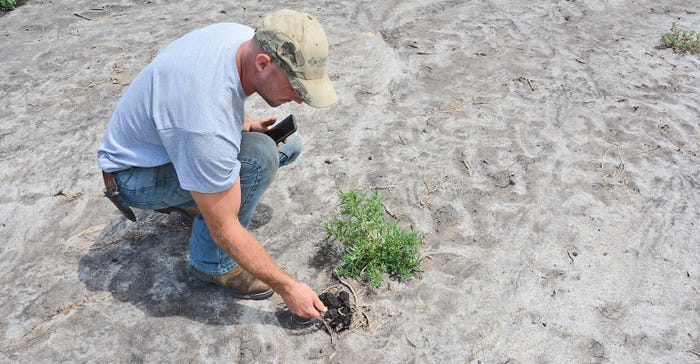 SALINE WOES: Michael Sandness examines a plant growing in the middle of a saline area in one of this fields. He’s trying to keep such areas from expanding.
SALINE WOES: Michael Sandness examines a plant growing in the middle of a saline area in one of this fields. He’s trying to keep such areas from expanding.

Melissa was able to help him quickly compare several "what’s ifs," he says:
• What if I plant alfalfa and sell the hay instead of planting corn or soybeans?
• What if I plant cover crops and custom graze it?
• What if I put the land in a conservation program or enroll in an easement?
"I’m trying to find the most economical way to keep saline areas on my farm from getting bigger," he says. "All the other benefits – soil health, erosion control and water quality — are a bonus."
Pheasants Forever information
For more information about the program, contact one of these Pheasants Forever precision ag and conservation specialists:
• North Dakota — Melissa Shockman, 701-709-0963
• South Dakota — Eric Magedanz, 605-880-2651
• Minnesota — BJ Werk, 701-238-6504
• Wisconsin — Scott Stipetich, 715-209-4846
• All other states — Ryan Heiniger, 319-768-8348
You May Also Like




